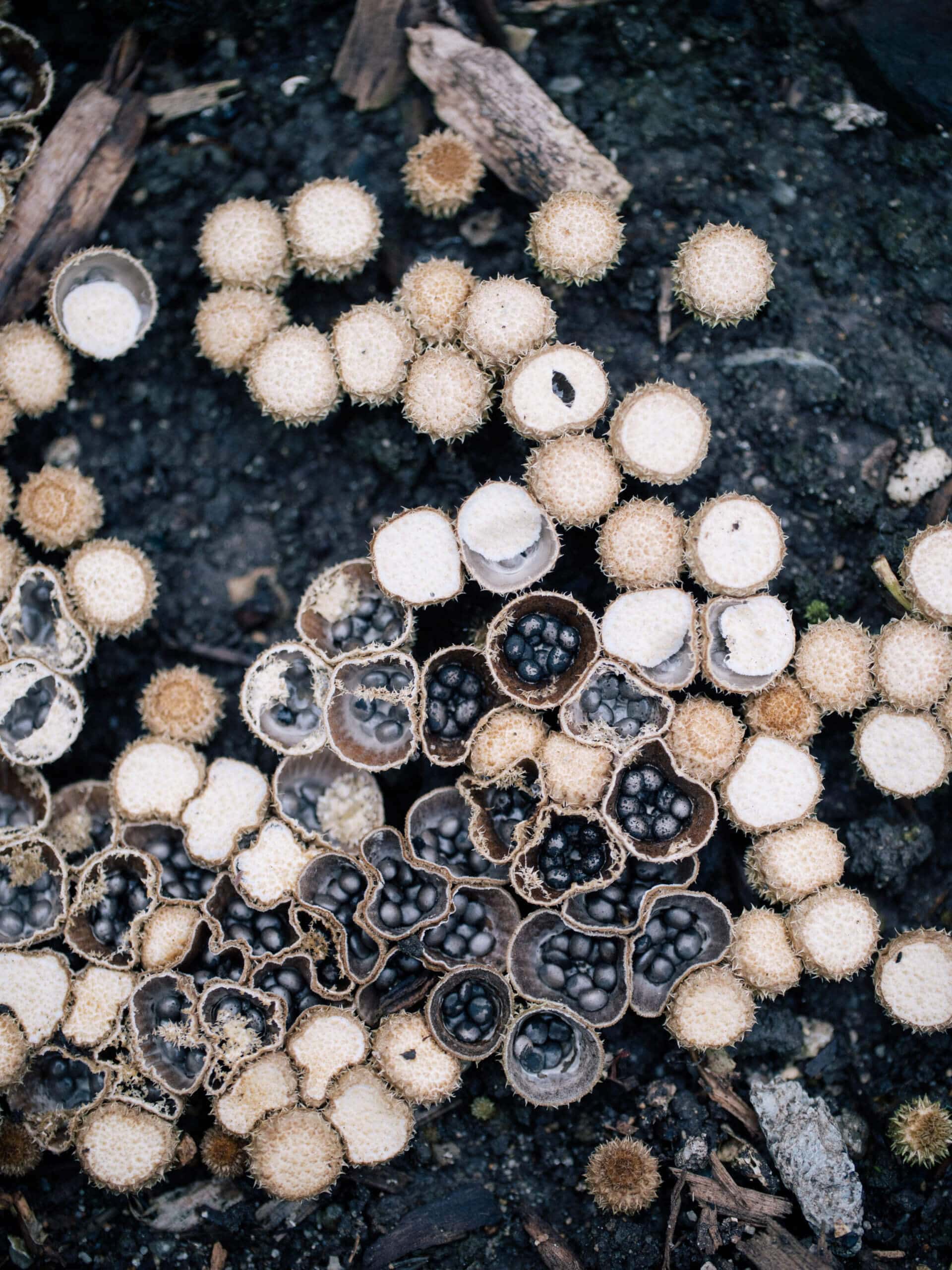“Can you eat them?” is the question I’m inevitably requested as soon as we uncover dense mats of mushrooms rising up from our wood chip mulch after an excellent rain.
And whereas these ones look pretty showy and fleshy, you’d merely stroll by them with no re-evaluation.
Each mushroom shouldn’t be greater than the size of a pinky nail, just a few millimeters broad and tall. Of their immature state, the mushrooms are inconspicuous nubs with spiky or fluted sides, completely enclosed to protect the “eggs” inside.


As they age, the caps rupture to reveal a nest of eggs denotive of the mushrooms’ frequent title: chook’s nest fungi.


What’s chook’s nest fungus?
Fowl’s nest fungus—the mushroom—is not the equivalent chook’s nest in Chinese language language chook’s nest soup (which might be exact birds’ nests from the edible-nest swiftlet and black-nest swiftlet).
Fowl’s nest fungi are part of the Nidulariaceae family of fungi, recognized for his or her stemless, rounded, gap fruitbodies that resemble egg-filled birds’ nests. They embody Nidularia, Nidula, Mycocalia, Crucibulum, and Cyathus.
The fungi that current up most frequently in my yard are Cyathus striatus, which have flared, tan-colored cups (often known as sporocarp) holding flattened, darkish gray “eggs” (often known as periodoles) which will be shaped like lentils.




They’re wonderful decomposers and thrive in damp, woodsy environments, usually displaying in shady vegetable gardens or woody mulched paths. As long as the native climate is temperate with intermittent rains, chook’s nest fungi can unfold by the use of any decaying pure matter they arrive in contact with.
Related: What IS That?! Canine Vomit Fungus: The Weird Slime Mould in Your Yard
You’ll uncover groups of chook’s nest fungi in ineffective tree trunks, rotted timber, wood mulch, bark chips, sawdust, decaying vegetation, or humus-rich soil, notably in fall. You’ll even see them pop up in animal dung, as a result of the periodoles can survive a journey by the use of the digestive tracts of cows and horses.


The life cycle of chook’s nest fungus
Fowl’s nest fungi aren’t solely fascinating in look, nevertheless fascinating of their reproductive method. They multiply by the use of the “eggs” of their cups, nevertheless not in the way in which in which you’d probably suppose.
Up shut, the eggs are nearly metallic wanting, resembling shiny river stones. They’re typically known as periodoles, they often operate defending sacs for the mushroom’s spores.




When drops of water from rain or irrigation land throughout the cups, they eject the periodoles as a lot as 4 toes away—hopefully to hospitable terrain the place they will reproduce.
On the size of quite a few millimeters, even a single raindrop can exert ample energy to launch the periodoles like a water cannon. This distinctive strategy of dispersal is why you’ll usually hear chook’s nest fungi often known as “splash cups.”
That’s the place it can get truly attention-grabbing: Each periodole is linked to a funicular twine, primarily an prolonged, fantastic thread with a sticky tail that unwinds quite a few inches. Positive, inches. From that tiny cup!
As a result of the periodole sails by the use of the air, the twine would possibly can be found contact with, say, a blade of grass or a twig. It can get caught by its tail and shortly wraps throughout the grass, very like a high-flying sport of tetherball.


Proper right here it stays until the periodole dries, then splits open to launch the spores.
When the spores germinate, they become branching filaments often known as hyphae. The mass of hyphae (often known as mycelium) weaves by the use of moist woody particles and consumes the wood to gasoline its progress.
Fowl’s nest fungi are saprophytes (microorganisms that reside on ineffective pure matter) and this pure course of is mainly how wood decomposes.
When two fully completely different mating strains of mycelia fuse collectively, they sort a model new chook’s nest fungus that takes nutritional vitamins from pure waste and breaks it down shortly (speeding up decomposition by two-fold.) This cycle usually occurs between July and October.
Having chook’s nest fungi throughout the yard makes it so much easier and quicker to wash up plant particles, since they cut back large chunks into slivers that finally decay and help enrich the soil.


Is chook’s nest fungus edible?
At a span of solely a centimeter all through, chook’s nest fungi are considered inedible ensuing from their tiny dimension, though no look at has ever confirmed them to be poisonous.
Harold J. Brodie, a Canadian mycologist who studied chook’s nest fungi extensively, concluded in his 1975 e-book, The Fowl’s Nest Fungi, that the mushrooms had been “not sufficiently large, fleshy, or odorous to be of curiosity to individuals as meals,” though some species have been utilized by native peoples to stimulate fertility.
The 1910 publication Minnesota Plant Analysis suggests they’re “not edible owing to their leathery texture.”
So we’ll give this species a miss, as there are far more satisfying (and delicious) mushrooms you can harvest throughout the wild.


How do you dispose of chook’s nest fungus?
Of the entire fungi present in a yard, chook’s nest fungus is probably going one of the crucial useful because of its pure composting skills. It isn’t harmful to individuals, canines, wildlife, or dwelling vegetation, so administration measures aren’t compulsory.
However when the “eggs” change right into a nuisance (sticking to surfaces like vehicles, houses, or completely different buildings the place they’re robust to remove), you can cut back the probabilities of chook’s nest fungi displaying in your yard by raking the soil typically, lowering irrigation in shady areas, and using dwelling mulches and edible flooring covers (instead of arborist wood chips) in your yard beds.
Fungicide must under no circumstances be used, as a result of it would disrupt the pure processes in your ecosystem.
View the Web Story on chook’s nest fungus.
This submit updated from an article that originally appeared on January 15, 2015.
